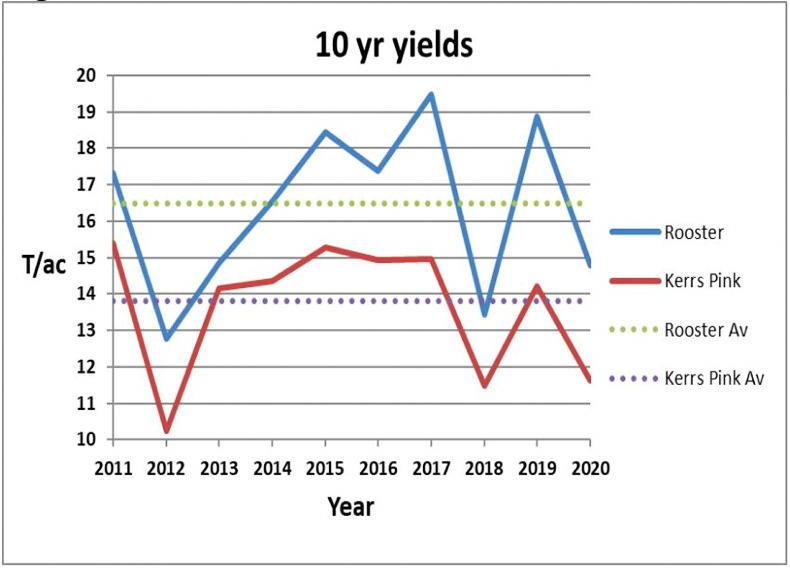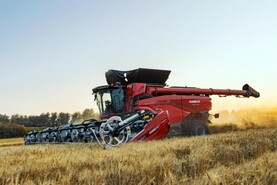Late frosts, drought and excessive rainfall are being blamed for this year’s low potato crop yields.
The results from Teagasc’s annual yield dig analysis shows that just 2012 and 2018 produced lower yields than 2020.
Some growers were finished digging very early this year, while many others finished in October.
However, growers in the northwest are still struggling to finish harvesting in very poor soil conditions.
As a result, Rooster and Kerr’s Pink yielded lower than the 10-year average of 16.38t/ac and 13.80t/ac respectively (see Figure 1). Waste is slightly higher this year than 2019.
Figure 1: 10-year potato yield trends

Source: Teagasc
Rooster and Kerr’s Pink
Table 1 shows the results for Rooster for each region sampled.
As Rooster now makes up over 50% of the maincrop area grown, this will result in a significant decrease in overall production from 2019. Table 2 gives the results for Kerr’s Pink.
The yields recorded show a significant decrease on the 2019 crop and, despite the early planting, it was noticeable that, in many crops, tuber numbers were low.
Therefore, yields were always going to be limited, the report states.
Despite the drought, only 33% of the crops sampled were irrigated.
Area
The area of maincrop varieties planted in 2020 also increased slightly from 7,434ha in 2019 to 7,817ha. This represents a 5% increase in area.
The areas of early season and seed crops also increased by 30% and 5% respectively.
Overall, the report states that production will be lower than last year, but the effect of COVID-19 on processing and peeling markets may dampen demand.
Late frosts, drought and excessive rainfall are being blamed for this year’s low potato crop yields.
The results from Teagasc’s annual yield dig analysis shows that just 2012 and 2018 produced lower yields than 2020.
Some growers were finished digging very early this year, while many others finished in October.
However, growers in the northwest are still struggling to finish harvesting in very poor soil conditions.
As a result, Rooster and Kerr’s Pink yielded lower than the 10-year average of 16.38t/ac and 13.80t/ac respectively (see Figure 1). Waste is slightly higher this year than 2019.
Figure 1: 10-year potato yield trends

Source: Teagasc
Rooster and Kerr’s Pink
Table 1 shows the results for Rooster for each region sampled.
As Rooster now makes up over 50% of the maincrop area grown, this will result in a significant decrease in overall production from 2019. Table 2 gives the results for Kerr’s Pink.
The yields recorded show a significant decrease on the 2019 crop and, despite the early planting, it was noticeable that, in many crops, tuber numbers were low.
Therefore, yields were always going to be limited, the report states.
Despite the drought, only 33% of the crops sampled were irrigated.
Area
The area of maincrop varieties planted in 2020 also increased slightly from 7,434ha in 2019 to 7,817ha. This represents a 5% increase in area.
The areas of early season and seed crops also increased by 30% and 5% respectively.
Overall, the report states that production will be lower than last year, but the effect of COVID-19 on processing and peeling markets may dampen demand.







 This is a subscriber-only article
This is a subscriber-only article











SHARING OPTIONS: